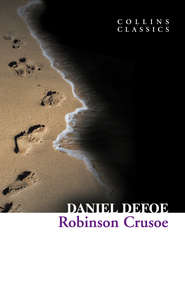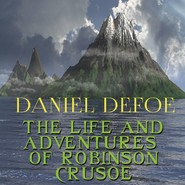По всем вопросам обращайтесь на: info@litportal.ru
(©) 2003-2024.
✖
Defoe on Sheppard and Wild: The True and Genuine Account of the Life and Actions of the Late Jonathan Wild by Daniel Defoe
Настройки чтения
Размер шрифта
Высота строк
Поля
Defoe on Sheppard and Wild: The True and Genuine Account of the Life and Actions of the Late Jonathan Wild by Daniel Defoe
Daniel Defoe
Richard Holmes
Part of the outstanding biographical series – edited by Richard Holmes – that recovers the great classical tradition of English biography. Every book is a biographical masterpiece, still thrilling to read and vividly alive.In this pioneering series, Richard Holmes, the world’s leading Romantic biographer, sets out to recover the great forgotten tradition of English biographical writing. ‘I have had no time for dusty tomes,’ writes Holmes, ‘I have looked for brevity, intelligence and style. Above all, I have sought out great biographical writers: biographers with passion, biographers who have found a way to the heart and soul of a memorable subject.’Jack Sheppard was an 18th-century Houdini – a handsome young escape artist who broke out of his cell on Newgate’s grim Death Row three times. Jonathan Wild was the infamous Thief-Taker General who helped to recapture him and many other criminals, only to be tried and executed himself for racketeering, among scenes of mayhem at Tyburn.Daniel Defoe, the master of adventure fiction, was fascinated by ‘True Confessions’ and the workings of the criminal personality (including its daring, its stoicism and its humour). He was the first to retell these stories, based on personal interviews in Newgate, which also include a thrilling (sometimes hour by hour) reconstruction of events.
DEFOE ON
SHEPPARD AND WILD
The History of the Remarkable Life of John Sheppard
A Narrative of All the Robberies, Escapes &c of John Sheppard
The True And Genuine Account Of The Life And Actions Of The Late Jonathan Wild
Daniel Defoe
EDITED WITH AN INTRODUCTION BY
RICHARD HOLMES
HARPER PERENNIAL
CONTENTS
INTRODUCTION (#u22fb1c1b-c2de-5779-a034-80a1ddba94c8)
THE HISTORY OF THE REMARKABLE LIFE OFJOHN SHEPPARD (#u652ef2df-3ced-57c1-b177-c7e47e92d4d3)
TO THE CITIZENS OF LONDON AND WESTMINSTER (#ulink_bb18978b-a511-55a1-9b44-146caf5d0c48)
THE LIFE OF JOHN SHEPPARD, &c. (#ulink_de95c68c-85cb-5232-a531-e82106122671)
A NARRATIVEOF ALL THEROBBERIES, ESCAPES, &c.OFJOHN SHEPPARD (#litres_trial_promo)
THE TRUE AND GENUINE ACCOUNT OF THE LIFE AND ACTIONS OF THE LATEJONATHAN WILD (#litres_trial_promo)
THE PREFACE (#litres_trial_promo)
INTRODUCTION (#litres_trial_promo)
The LIFE AND ACTIONS OF JONATHAN WILD (#litres_trial_promo)
NOTE ON DEFOE ATTRIBUTIONS (#litres_trial_promo)
INDEX (#litres_trial_promo)
FURTHER READING (#litres_trial_promo)
SELECT CHRONOLOGY (#litres_trial_promo)
CLASSIC BIOGRAPHIES EDITED BY RICHARD HOLMES (#litres_trial_promo)
Copyright (#litres_trial_promo)
About the Publisher (#litres_trial_promo)
INTRODUCTION (#ulink_58e3b6e5-89ea-5bac-948a-7040820a6c4c)
1
On 4 September, 1724, an insignificant small-time thief named John Sheppard was due to be hanged, with several others, at Tyburn gallows (now Marble Arch) in London. His crime was stealing three rolls of fustian cloth, two silver spoons and a silk handkerchief, total worth £50. But on that crisp autumn morning a surprising official announcement appeared in the leading London broadsheets.
Whereas John Sheppard broke out of the Condemned Hold of Newgate (with his Irons on) by cutting off one of the large Iron Spikes over the main Door on Monday 31 August last, about six o’clock of the Evening … And Whereas he is about 23 years of Age and about five Foot four Inches high, very slender, and of a pale Complexion, has lately been very sick, did wear a light Bob Wig, a light coloured Cloth Coat, and white Waistcoat, has an impediment in his Speech and is a Carpenter by Trade … Whoever will discover or apprehend him so that he be brought to Justice shall receive 20 guineas Reward to be paid by the Keeper of Newgate.
From this moment Jack Sheppard became a celebrity. It was not for his crimes, which were commonplace, but for his astonishing escapes from prison. In fact young Sheppard (he was actually twenty-two) had been escaping from prisons all over London that spring and summer of 1724. First from St Giles Roundhouse in April (where he went out through the prison roof, throwing down tiles at his pursuers); next from the New Bridewell Prison, Clerkenwell, in May (where he got out through a barred window with a 25 foot drop beneath, and took his shapely mistress Elizabeth Lyon with him); and then in August from the condemned cell of Newgate Prison itself, where the file for the ‘large Iron Spike’ was provided by the same Elizabeth Lyon, together with the classic disguise of a woman’s dress.
2
With his recapture by an armed posse on Finchley Common on 10 September, Sheppard’s news value doubled. A new trial had to be arranged, ironically in order to fulfill identification formalities. Was it the same Sheppard? He was transferred to the top security cell in the third floor of the notorious Stone Castle of Newgate, where he was handcuffed and fettered, then padlocked to irons, and finally chained to the floor - a triple measure of security in a room that was also barred and locked.
Unbelievably, Jack escaped from the death cell for a second time (his fourth evasion) on 15 October, 1724, with an fantastic ingenuity and courage that quickly became legendary. Jailors, clairvoyants and journalists vied to explain his escape methods. He remained at liberty for a further fortnight, wearing several disguises, carousing with his mistress, Elizabeth Lyon, but was finally recaptured (while buying everyone drinks) at midnight in a tavern in Clare Market.
Jack was now the most celebrated criminal in England. One journalist wrote: ‘the three great Curiosities in Town at present are the young Lions stuffed in the Tower, the Ostrich on Ludgate Hill, and the famous John Sheppard in Newgate.’ He was visited in his cell by hundreds of sightseers and well-wishers (they paid four shillings a time). The champion bare-knuckle boxer Figg came and proposed a match - a drinking one. The official Court painter Sir James Thornhill made sketches of Jack in chains, which were turned into prints and paintings. King George ordered one for himself. However there was no reprieve, no royal pardon and no further escape. Amidst unparalleled scenes of popular grief and mayhem, Sheppard was executed at Tyburn on 16 November, 1724.
This brief but sensational London news story of autumn 1724, with its strong romantic overtones, also had a much darker background. Each time Sheppard had escaped, he (or his mistress Elizabeth Lyon) had been recaptured by the famous Newgate thief-catcher, Jonathan Wild. Wild was an older, hard-bitten figure who dominated the London underworld from his offices opposite Newgate Prison. He already had a fearful reputation as a law-enforcer, built up over a decade. He was personally responsible for the capture and execution of over 120 criminals since he began his operations in 1714, and had amassed a fortune in reward money. It was said that Wild’s networks of spies, narks, grasses, and bounty-hunters stretched all over London and much of the home counties. He also ran a quite extraordinarily effective organisation for tracking and recovering stolen property. It was said that Wild could recover anything, from a single diamond ring to an entire consignment of Flanders lace, within a week. But it was best not to enquire how he achieved this.
Unlike the handsome, stammering, boyish Sheppard, Wild was a heavily built and glowering figure. He carried pistols wherever he went, had scars on his face and a silver plate in his skull from sabre wounds received in the line of duty. He limped from gout, drank heavily and (like Henry VIII) had six wives. He was however renowned for his courage, his cool head, his icy good manners and his graveyard humour. His jokes were so savage that one condemned prisoner (Sheppard’s friend Blueskins) was once provoked to fly at Wild’s throat with a penknife, and afterwards confessed on the scaffold that it was the one action of his life that he did not regret.
Thus there was a natural and dramatic rivalry between Sheppard and Wild, which quickly caught the popular imagination. Here was an intense clash of personalities and life-principles: the incorrigible young escapist pitted against the grim relentless thief-taker. It could be seen as a duel between crime and justice, rebellion and authority, youth and age, or freedom and oppression, depending on one’s point of view.
Nor was the ultimate outcome clear. For although Sheppard was finally caught and executed, he was to achieve the posthumous status of a people’s hero, a cockney pocket-Hercules. While no less melodramatically, Jonathan Wild was himself to be executed the following May 1725, having been arrested on charges of corruption, gang-running and receiving stolen goods. Henceforth he too, like Sheppard, entered urban folklore, but as one of the great villains of the London underworld. Altogether it was a story just waiting for any journalist, novelist, playwright - or biographer - to seize.
In fact over thirty ballads, plays, pamphlets and short lives of Sheppard and Wild appeared over the next two years. But it was John Applebee, an enterprising editor based in Blackfriars and specialising in crime publishing, who commissioned the three best early biographies, which are here reprinted. They consist of two short pamphlets on the life of Jack Sheppard published in October and November 1724, and a longer life of Jonathan Wild published in the following June 1725. All were bestsellers, the second pamphlet running to eight editions in a few weeks. But all were anonymous.
3
How then did Daniel Defoe come to be involved with the Sheppard and Wild story? After the huge success of Robinson Crusoe, which ran to five editions by the end of 1719, Defoe was said to have ‘cleared over a thousand guineas’, which made him a prosperous man for the first time in his career. Defoe’s life began to change. He was now sixty, had two adult sons working in the City (Daniel and Benjamin), and three attractive but unmarried daughters (Maria, Hannah, and the youngest Sophia). Prosperity bought a different pace and direction to his work, and a desire to consolidate his position as a successful professional author, no longer a Grub Street hack.
He bought a large Queen Anne house with four acres of gardens in Stoke Newington, four miles north of London, where he began to entertain friends. He set up a small retail business, merchandising luxury foods (cheese, anchovies, oysters, honey) near Tower Dock. In August 1722 he invested £1,000 in a 99 year lease of farmland and timber near Colchester, partly to secure his own family income, and partly to guarantee the future independence of his three daughters. His second daughter, Hannah Defoe, probably his favourite and an able business woman, co-signed the lease. He also established a coat of arms in the name of De Foe, and had it fixed in a seal.
These financial securities did not indicate retirement from writing, but a steady change in direction from journalism to books. Defoe became less interested in party politics and topical journalism, and began to concentrate on more enduring themes: trade and travel, crime and corruption, human misfortune and ingenuity, the tangled lives of men and women. From 1720 he gradually ceased writing for the highly politicized Mist’s journal (which he had partly owned), and began to concentrate on further carefully researched books, both fiction and non-fiction. For the first time he was able to undertake these with publishers’ ‘subscriptions’ (advances). He also contributed occasional unsigned articles to a new ‘serious entertainment’ paper, John Applebee’s Weekly Journal, which specialized in crime reporting.
We catch a rare glimpse of the sixty-four year old Defoe at this period, as seen through the eyes of a young poet called Henry Baker. Baker was cautiously paying court to Sophia Defoe, and his prospective father-in-law evidently appeared as a grand, wealthy and faintly alarming old literary lion. Ensconced at Newington Green Baker found ‘Mr D[efoe], a Gentleman wellknown by his Writings, who had built there a very handsome House, as a Retirement from London, and amused his Time either in the Cultivation of a large and pleasant Garden, or in the Pursuit of his Studies, which he found means of making very Profitable. He was now at least sixty Years of Age, afflicted with the Gout and Stone, but retained all his mental faculties entire.’
This retired, sedentary, not to say valetudinarian figure, was something of an illusion. Defoe’s energy was still remarkable, and far from ‘amusing his Time’, he was writing with fantastic speed. In 1722 he published his Newgate novel, Moll Flanders, another huge commercial success, which ran to three editions. He also wrote A Journal of the Plague Year, and the pirate novel Colonel Jack. All of these, incidentally, were anonymous.
He then signed a four year contract with a consortium of publishers and began collecting material for his famous three-volume Tour Through the Whole Island of Great Britain, which would be published in 1724–6. Meanwhile, in 1724 he also wrote Roxana, and the following spring his life of Jonathan Wild (1725). He could hardly have had time to put down his pen, let alone cultivate his rose garden.
Daniel Defoe
Richard Holmes
Part of the outstanding biographical series – edited by Richard Holmes – that recovers the great classical tradition of English biography. Every book is a biographical masterpiece, still thrilling to read and vividly alive.In this pioneering series, Richard Holmes, the world’s leading Romantic biographer, sets out to recover the great forgotten tradition of English biographical writing. ‘I have had no time for dusty tomes,’ writes Holmes, ‘I have looked for brevity, intelligence and style. Above all, I have sought out great biographical writers: biographers with passion, biographers who have found a way to the heart and soul of a memorable subject.’Jack Sheppard was an 18th-century Houdini – a handsome young escape artist who broke out of his cell on Newgate’s grim Death Row three times. Jonathan Wild was the infamous Thief-Taker General who helped to recapture him and many other criminals, only to be tried and executed himself for racketeering, among scenes of mayhem at Tyburn.Daniel Defoe, the master of adventure fiction, was fascinated by ‘True Confessions’ and the workings of the criminal personality (including its daring, its stoicism and its humour). He was the first to retell these stories, based on personal interviews in Newgate, which also include a thrilling (sometimes hour by hour) reconstruction of events.
DEFOE ON
SHEPPARD AND WILD
The History of the Remarkable Life of John Sheppard
A Narrative of All the Robberies, Escapes &c of John Sheppard
The True And Genuine Account Of The Life And Actions Of The Late Jonathan Wild
Daniel Defoe
EDITED WITH AN INTRODUCTION BY
RICHARD HOLMES
HARPER PERENNIAL
CONTENTS
INTRODUCTION (#u22fb1c1b-c2de-5779-a034-80a1ddba94c8)
THE HISTORY OF THE REMARKABLE LIFE OFJOHN SHEPPARD (#u652ef2df-3ced-57c1-b177-c7e47e92d4d3)
TO THE CITIZENS OF LONDON AND WESTMINSTER (#ulink_bb18978b-a511-55a1-9b44-146caf5d0c48)
THE LIFE OF JOHN SHEPPARD, &c. (#ulink_de95c68c-85cb-5232-a531-e82106122671)
A NARRATIVEOF ALL THEROBBERIES, ESCAPES, &c.OFJOHN SHEPPARD (#litres_trial_promo)
THE TRUE AND GENUINE ACCOUNT OF THE LIFE AND ACTIONS OF THE LATEJONATHAN WILD (#litres_trial_promo)
THE PREFACE (#litres_trial_promo)
INTRODUCTION (#litres_trial_promo)
The LIFE AND ACTIONS OF JONATHAN WILD (#litres_trial_promo)
NOTE ON DEFOE ATTRIBUTIONS (#litres_trial_promo)
INDEX (#litres_trial_promo)
FURTHER READING (#litres_trial_promo)
SELECT CHRONOLOGY (#litres_trial_promo)
CLASSIC BIOGRAPHIES EDITED BY RICHARD HOLMES (#litres_trial_promo)
Copyright (#litres_trial_promo)
About the Publisher (#litres_trial_promo)
INTRODUCTION (#ulink_58e3b6e5-89ea-5bac-948a-7040820a6c4c)
1
On 4 September, 1724, an insignificant small-time thief named John Sheppard was due to be hanged, with several others, at Tyburn gallows (now Marble Arch) in London. His crime was stealing three rolls of fustian cloth, two silver spoons and a silk handkerchief, total worth £50. But on that crisp autumn morning a surprising official announcement appeared in the leading London broadsheets.
Whereas John Sheppard broke out of the Condemned Hold of Newgate (with his Irons on) by cutting off one of the large Iron Spikes over the main Door on Monday 31 August last, about six o’clock of the Evening … And Whereas he is about 23 years of Age and about five Foot four Inches high, very slender, and of a pale Complexion, has lately been very sick, did wear a light Bob Wig, a light coloured Cloth Coat, and white Waistcoat, has an impediment in his Speech and is a Carpenter by Trade … Whoever will discover or apprehend him so that he be brought to Justice shall receive 20 guineas Reward to be paid by the Keeper of Newgate.
From this moment Jack Sheppard became a celebrity. It was not for his crimes, which were commonplace, but for his astonishing escapes from prison. In fact young Sheppard (he was actually twenty-two) had been escaping from prisons all over London that spring and summer of 1724. First from St Giles Roundhouse in April (where he went out through the prison roof, throwing down tiles at his pursuers); next from the New Bridewell Prison, Clerkenwell, in May (where he got out through a barred window with a 25 foot drop beneath, and took his shapely mistress Elizabeth Lyon with him); and then in August from the condemned cell of Newgate Prison itself, where the file for the ‘large Iron Spike’ was provided by the same Elizabeth Lyon, together with the classic disguise of a woman’s dress.
2
With his recapture by an armed posse on Finchley Common on 10 September, Sheppard’s news value doubled. A new trial had to be arranged, ironically in order to fulfill identification formalities. Was it the same Sheppard? He was transferred to the top security cell in the third floor of the notorious Stone Castle of Newgate, where he was handcuffed and fettered, then padlocked to irons, and finally chained to the floor - a triple measure of security in a room that was also barred and locked.
Unbelievably, Jack escaped from the death cell for a second time (his fourth evasion) on 15 October, 1724, with an fantastic ingenuity and courage that quickly became legendary. Jailors, clairvoyants and journalists vied to explain his escape methods. He remained at liberty for a further fortnight, wearing several disguises, carousing with his mistress, Elizabeth Lyon, but was finally recaptured (while buying everyone drinks) at midnight in a tavern in Clare Market.
Jack was now the most celebrated criminal in England. One journalist wrote: ‘the three great Curiosities in Town at present are the young Lions stuffed in the Tower, the Ostrich on Ludgate Hill, and the famous John Sheppard in Newgate.’ He was visited in his cell by hundreds of sightseers and well-wishers (they paid four shillings a time). The champion bare-knuckle boxer Figg came and proposed a match - a drinking one. The official Court painter Sir James Thornhill made sketches of Jack in chains, which were turned into prints and paintings. King George ordered one for himself. However there was no reprieve, no royal pardon and no further escape. Amidst unparalleled scenes of popular grief and mayhem, Sheppard was executed at Tyburn on 16 November, 1724.
This brief but sensational London news story of autumn 1724, with its strong romantic overtones, also had a much darker background. Each time Sheppard had escaped, he (or his mistress Elizabeth Lyon) had been recaptured by the famous Newgate thief-catcher, Jonathan Wild. Wild was an older, hard-bitten figure who dominated the London underworld from his offices opposite Newgate Prison. He already had a fearful reputation as a law-enforcer, built up over a decade. He was personally responsible for the capture and execution of over 120 criminals since he began his operations in 1714, and had amassed a fortune in reward money. It was said that Wild’s networks of spies, narks, grasses, and bounty-hunters stretched all over London and much of the home counties. He also ran a quite extraordinarily effective organisation for tracking and recovering stolen property. It was said that Wild could recover anything, from a single diamond ring to an entire consignment of Flanders lace, within a week. But it was best not to enquire how he achieved this.
Unlike the handsome, stammering, boyish Sheppard, Wild was a heavily built and glowering figure. He carried pistols wherever he went, had scars on his face and a silver plate in his skull from sabre wounds received in the line of duty. He limped from gout, drank heavily and (like Henry VIII) had six wives. He was however renowned for his courage, his cool head, his icy good manners and his graveyard humour. His jokes were so savage that one condemned prisoner (Sheppard’s friend Blueskins) was once provoked to fly at Wild’s throat with a penknife, and afterwards confessed on the scaffold that it was the one action of his life that he did not regret.
Thus there was a natural and dramatic rivalry between Sheppard and Wild, which quickly caught the popular imagination. Here was an intense clash of personalities and life-principles: the incorrigible young escapist pitted against the grim relentless thief-taker. It could be seen as a duel between crime and justice, rebellion and authority, youth and age, or freedom and oppression, depending on one’s point of view.
Nor was the ultimate outcome clear. For although Sheppard was finally caught and executed, he was to achieve the posthumous status of a people’s hero, a cockney pocket-Hercules. While no less melodramatically, Jonathan Wild was himself to be executed the following May 1725, having been arrested on charges of corruption, gang-running and receiving stolen goods. Henceforth he too, like Sheppard, entered urban folklore, but as one of the great villains of the London underworld. Altogether it was a story just waiting for any journalist, novelist, playwright - or biographer - to seize.
In fact over thirty ballads, plays, pamphlets and short lives of Sheppard and Wild appeared over the next two years. But it was John Applebee, an enterprising editor based in Blackfriars and specialising in crime publishing, who commissioned the three best early biographies, which are here reprinted. They consist of two short pamphlets on the life of Jack Sheppard published in October and November 1724, and a longer life of Jonathan Wild published in the following June 1725. All were bestsellers, the second pamphlet running to eight editions in a few weeks. But all were anonymous.
3
How then did Daniel Defoe come to be involved with the Sheppard and Wild story? After the huge success of Robinson Crusoe, which ran to five editions by the end of 1719, Defoe was said to have ‘cleared over a thousand guineas’, which made him a prosperous man for the first time in his career. Defoe’s life began to change. He was now sixty, had two adult sons working in the City (Daniel and Benjamin), and three attractive but unmarried daughters (Maria, Hannah, and the youngest Sophia). Prosperity bought a different pace and direction to his work, and a desire to consolidate his position as a successful professional author, no longer a Grub Street hack.
He bought a large Queen Anne house with four acres of gardens in Stoke Newington, four miles north of London, where he began to entertain friends. He set up a small retail business, merchandising luxury foods (cheese, anchovies, oysters, honey) near Tower Dock. In August 1722 he invested £1,000 in a 99 year lease of farmland and timber near Colchester, partly to secure his own family income, and partly to guarantee the future independence of his three daughters. His second daughter, Hannah Defoe, probably his favourite and an able business woman, co-signed the lease. He also established a coat of arms in the name of De Foe, and had it fixed in a seal.
These financial securities did not indicate retirement from writing, but a steady change in direction from journalism to books. Defoe became less interested in party politics and topical journalism, and began to concentrate on more enduring themes: trade and travel, crime and corruption, human misfortune and ingenuity, the tangled lives of men and women. From 1720 he gradually ceased writing for the highly politicized Mist’s journal (which he had partly owned), and began to concentrate on further carefully researched books, both fiction and non-fiction. For the first time he was able to undertake these with publishers’ ‘subscriptions’ (advances). He also contributed occasional unsigned articles to a new ‘serious entertainment’ paper, John Applebee’s Weekly Journal, which specialized in crime reporting.
We catch a rare glimpse of the sixty-four year old Defoe at this period, as seen through the eyes of a young poet called Henry Baker. Baker was cautiously paying court to Sophia Defoe, and his prospective father-in-law evidently appeared as a grand, wealthy and faintly alarming old literary lion. Ensconced at Newington Green Baker found ‘Mr D[efoe], a Gentleman wellknown by his Writings, who had built there a very handsome House, as a Retirement from London, and amused his Time either in the Cultivation of a large and pleasant Garden, or in the Pursuit of his Studies, which he found means of making very Profitable. He was now at least sixty Years of Age, afflicted with the Gout and Stone, but retained all his mental faculties entire.’
This retired, sedentary, not to say valetudinarian figure, was something of an illusion. Defoe’s energy was still remarkable, and far from ‘amusing his Time’, he was writing with fantastic speed. In 1722 he published his Newgate novel, Moll Flanders, another huge commercial success, which ran to three editions. He also wrote A Journal of the Plague Year, and the pirate novel Colonel Jack. All of these, incidentally, were anonymous.
He then signed a four year contract with a consortium of publishers and began collecting material for his famous three-volume Tour Through the Whole Island of Great Britain, which would be published in 1724–6. Meanwhile, in 1724 he also wrote Roxana, and the following spring his life of Jonathan Wild (1725). He could hardly have had time to put down his pen, let alone cultivate his rose garden.

















